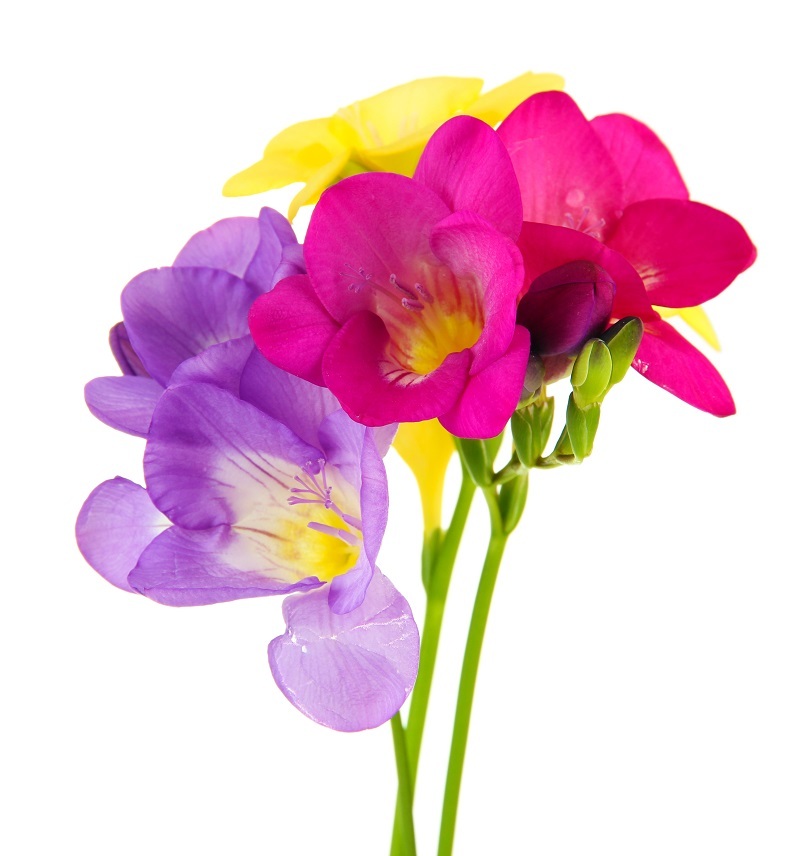A Comprehensive Guide to Orchid Care
Posted on 22/08/2025
A Comprehensive Guide to Orchid Care
Orchids are some of the most captivating and diverse plants on the planet, boasting exotic blooms, fascinating shapes, and an array of vibrant colors. For both beginners and seasoned gardeners alike, understanding the nuances of orchid care is essential to enjoy their beauty year-round. This in-depth guide covers every aspect needed to ensure healthy, thriving orchids in your home or garden. If you've been searching for the best practices for orchid maintenance, you're in the right place.
Introduction to Orchids
Orchids belong to one of the largest plant families, Orchidaceae, with over 25,000 species and thousands of hybrids worldwide. Native to a variety of climates, from tropical rainforests to temperate forests, they are renowned for their resilience and adaptability.
- Phalaenopsis (Moth Orchid) - Ideal for beginners, known for beautiful, long-lasting flowers
- Cattleya - Famous for their captivating fragrance and large, showy blooms
- Dendrobium - Popular for prolific blossoms and diverse coloration
- Oncidium (Dancing Lady Orchid) - Noted for sprays of bright, delicate flowers
Orchids are often regarded as delicate, but many varieties are actually quite resilient when their basic care needs are met. The secret is understanding their natural habitat and recreating those conditions as closely as possible.

Choosing the Right Orchid for Your Home
Before diving into orchid care, it's crucial to select the right species. Some orchids thrive on windowsills, while others require greenhouses or specific environmental controls.
Factors to Consider When Selecting an Orchid
- Light Requirements: Some orchids require bright, indirect sunlight (e.g. Cattleya), while others, such as Phalaenopsis, tolerate lower light.
- Humidity Level: Tropical species generally need more humidity than those from arid regions.
- Temperature Range: Choose orchids that suit the temperature range of your home.
- Space: Some grow compactly, while others need plenty of room to spread.
Orchid Potting and Soil: Getting it Right
Orchids are epiphytes by nature, often growing on tree branches rather than in soil. Choosing the right potting medium and container is vital for healthy root development.
Choosing an Orchid Pot
- Slatted Pots: Allow excellent airflow and drainage, mimicking the orchid's natural environment.
- Clear Plastic Pots: Make it easy to monitor root health and moisture levels.
- Ceramic Pots: Often decorative but must have ample drainage holes.
Optimum Orchid Media
- Bark: Promotes air circulation; ideal for epiphytic orchids.
- Sphagnum Moss: Retains moisture, perfect for young orchids or water-loving species.
- Perlite and Charcoal: Often mixed for added drainage and to prevent souring of the medium.
Always avoid regular potting soil, which can suffocate orchid roots.
Light Requirements for Healthy Orchids
Light is often the most misunderstood aspect of orchid care. Insufficient light is a common reason why orchids fail to bloom.
- Phalaenopsis (Moth Orchid): Prefers low to medium, indirect sunlight--an east or north-facing window is ideal.
- Cattleya and Dendrobium: Need more light--place near a south or west-facing window with filtered light.
Symptoms of insufficient light include dark green leaves and no flowers. Too much light leads to yellow or scorched leaves.
Tips for Perfect Orchid Lighting
- Use sheer curtains to filter intense rays
- Rotate your orchid regularly for even exposure
- Supplement with grow lights in winter or low-light rooms
Watering Your Orchid: How Much and How Often?
Proper watering is critical for
Best Practices for Watering Orchids
- Check the potting medium: Water when the top inch feels dry.
- Use tepid, rain, or distilled water: Tap water can contain harmful minerals.
- Water thoroughly: Let water run through the pot and drain completely--never let the pot sit in water.
*Tip: Orchid roots should be silvery and firm when dry, turning bright green after watering*
Humidity and Temperature for Optimal Orchid Growth
Most orchids crave moderate to high humidity levels (40%-70%). Low humidity can cause bud blast and leaf dehydration.
Maintaining Ideal Humidity
- Group plants together to increase surrounding moisture
- Use humidity trays filled with pebbles and water
- Mist leaves, but avoid excess water pooling in leaf axils
- Consider room humidifiers, especially in winter
Right Temperatures for Orchids
- Phalaenopsis: 60-85?F (16-29?C)
- Cattleya: 65-90?F (18-32?C)
- Dendrobium: 55-90?F (13-32?C)
Orchids benefit from a slight temperature drop at night, which encourages blooming.
Fertilizing Orchids: Feeding for Blooms
For the most spectacular results, feed your orchids regularly throughout the growing season. A balanced fertilizer (20-20-20) is usually recommended.
Top Tips for Orchid Fertilization
- Fertilize with half-strength orchid food every 2-3 weeks
- Flush with plain water monthly to remove mineral buildup
- Reduce fertilizing frequency during winter or when the plant is not actively growing
Repotting Orchids: When and How
Repotting every 1-2 years prevents medium breakdown and root strangulation. Signs it's time to repot include overcrowded roots, decomposed media, or signs of disease.
Step-by-Step Orchid Repotting Guide
- Gently remove the orchid from its pot
- Trim dead or rotted roots with sterilized scissors
- Place the orchid in fresh, moist orchid mix
- Water lightly and avoid direct sun until new growth appears
*Repotting can rejuvenate an ailing orchid and stimulate new blooms*
Common Orchid Problems and Solutions
No guide to orchid care would be complete without addressing potential issues. Here are some common orchid troubles and their remedies:
- Root Rot: Caused by overwatering. Repot with fresh medium, trim damaged roots
- Pest Infestation: Such as spider mites, scale, or mealybugs. Treat with insecticidal soap or neem oil
- Failed to Bloom: Often due to insufficient light or lack of night-time temperature drop
- Wrinkled Leaves: Sign of underwatering or root damage. Adjust watering and check root health
- Leaf Yellowing: Could be natural (old leaves shed), but also signals overwatering or nutrient issues
Encouraging Your Orchid to Re-Bloom
One of the most satisfying rewards for good orchid care is seeing your plant re-bloom. Here's how to boost your odds:
- Ensure your orchid receives enough light but not direct sun
- Maintain day/night temperature fluctuations
- Continue regular but not excessive feeding
- After blooms drop, trim the flower spike back to just above a healthy node to encourage new growth
Patience is key--some orchids may rest for months before flowering again.
Orchid Care Through the Seasons
Seasonal changes affect your orchid's growth and care needs. Adjust watering, feeding, and placement accordingly:
- Spring/Summer: Orchids actively grow--water and fertilize more frequently
- Autumn: Reduce watering as temperatures drop; watch out for lower light levels
- Winter: Orchids may be dormant--minimize watering and feeding, increase humidity

Final Orchid Care Tips and FAQs
General Orchid Care Tips
- Always use pots with drainage holes
- Keep leaves dry to avoid fungal issues
- Don't cut healthy roots poking from the pot--they are normal
- Observe your orchid regularly to notice changes early
Frequently Asked Questions
- How long do orchids live? With proper care, orchids can live for decades and bloom annually.
- How do I know if my orchid is healthy? Healthy orchids have plump, green roots, firm leaves, and produce flowers at least once a year.
- Should I mist my orchid? Misting can help humidity but avoid wetting flowers and crown rot.
Conclusion: Enjoying the Art of Orchid Care
Orchids are both collectible treasures and striking additions to any home or garden. Following expert care guidelines on watering, light, feeding, and repotting can transform your orchid-keeping experience from frustrating to rewarding. Remember, each variety may require slightly different care--get to know your orchid like a friend. With a bit of attention and understanding, you'll enjoy spectacular blooms for years to come.
Happy growing and may your orchids thrive!
Latest Posts
Secrets to Keeping Your Hydrangeas Healthy and Happy
Creative Ways to Keep Your Cut Flowers Vibrant
Three Practical Methods to Extend Flower Longevity





